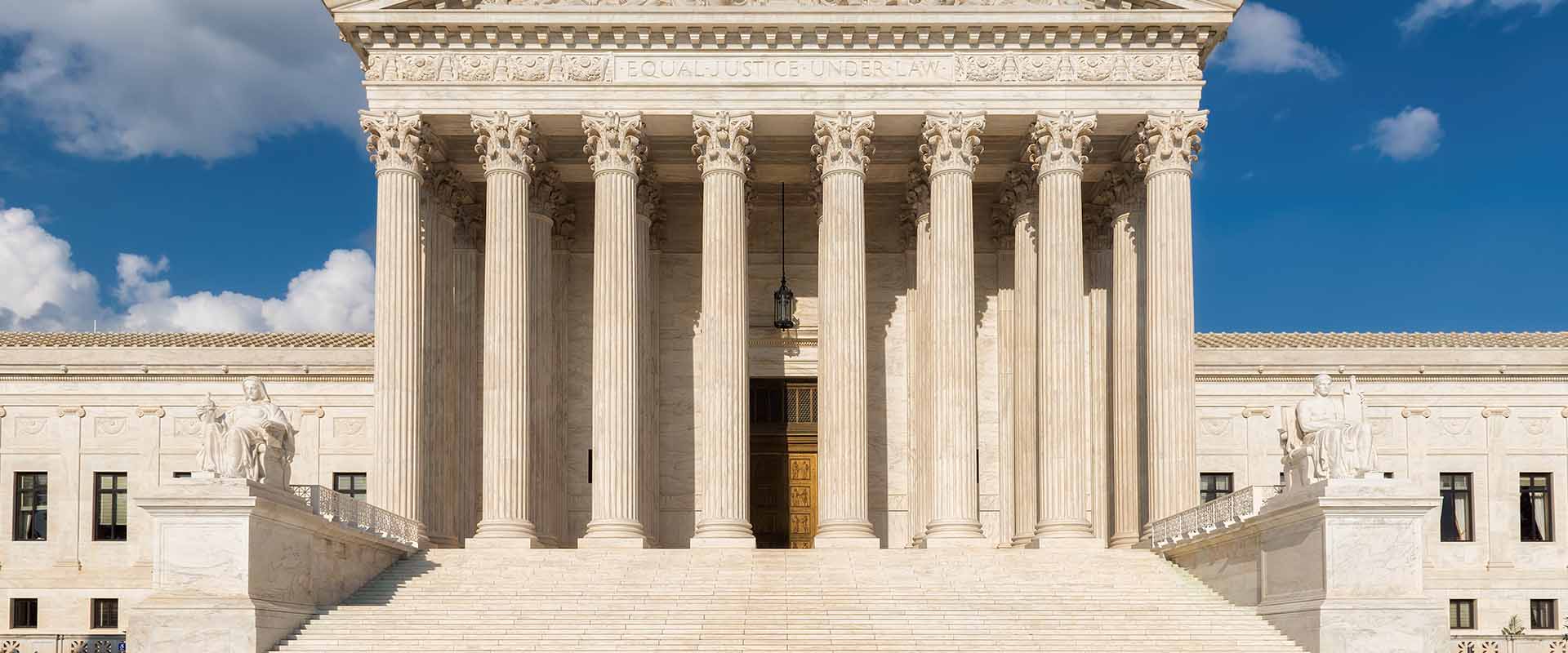Ninth Circuit Upholds Decision To Expel Student For Creating A "Hit List" And Solidifies Standard For Student Discipline For Off-Campus Expression.

June 2019
Number 30
Confirming a point which seems to make good sense, the Ninth Circuit Court of Appeals has held that school officials may discipline students for the student's off-campus expression, where the expression constitutes a credible, identifiable threat to others in the school community, even if the student did not intend to communicate such speech to any third party.
Background
In McNeil v. Sherwood School District 88J, the personal journal of a sophomore high school student, CLM, was discovered by his mother which contained graphic depictions of violence and a "hit list" of 22 students and one former school employee who "must die." Upon learning of the journal, law enforcement officers searched CLM's residence and found several weapons, including a gun and 525 rounds of ammunition belonging to CLM, but "found nothing 'to indicate any planning had gone into following through on the hit list.'"
Once on notice of CLM's hit list, CLM's school district's policies required the school to notify the parents of the 22 students on the list within 12 hours. While the district was still in the process of making these necessary calls, mayhem broke loose; calls flooded in from parents and media outlets; parents kept their children home from school for several days; and some parents even transferred their children out of the district. Subsequently, the district expelled CLM for one year because news of the existence of his hit list significantly disrupted the learning environment at school and his return would only amplify that disruption. CLM sued the district for violating his First Amendment free speech rights. The United States District Court granted summary judgment in favor of the district, and CLM appealed.
The Ninth Circuit's Analysis
The Ninth Circuit began its analysis with two inquiries: (1) whether the district could permissibly restrict or regulate CLM's off-campus speech; and (2) if so, whether the District's decision to expel CLM for off-campus speech violated the his free speech rights under the First Amendment as framed by the standard for regulating student speech under the Supreme Court's opinion in Tinker v. Des Moines Independent Community School District (1969) 393 U.S. 503.
The Ninth Circuit noted that the court had not previously settled on a test for when a school can restrict or regulate off-campus student speech, but pointed to the approaches taken in past similar cases. The two approaches rely upon the following respective bases for speech restriction or regulation:
The Ninth Circuit concluded that it was reasonable for the district to conclude that CLM presented a credible threat of severe harm to the school; the district could reasonably foresee that the news of the threat would reach and impact the school and disrupt the school environment; and the content of the speech involved the school. CLM's argument that he had no intent to communicate the speech at issue to anyone else was of no moment for the Court. Rather, the Ninth Circuit expressly rejected that argument, and reaffirmed the Court's prior holding that, "regardless of the speaker's intent or how speech comes to a school district's attention, a school district may take disciplinary action in response to off-campus speech when it reasonably determines that it faces an identifiable and credible threat of school violence." The Court did, however, draw a distinction between a perceived threat and an identifiable and credible threat-the former of which would not so easily permit for regulation or student discipline by a school district.
Lastly, the Ninth Circuit upheld CLM's expulsion, while also noting CLM had not challenged the duration of the expulsion. The Court noted that at a certain point, discipline may lose its basis in reasonable, ongoing concerns of campus safety, disruption, or interference with the rights of other students, and instead become primarily a punitive, retrospective response to the student's speech. The Court's sentiments arguably suggest a view by the panel judges that a one year expulsion was excessive given the facts of this case.
Takeaways
McNeil solidifies that school districts must look to the totality of the circumstances when considering student discipline for expression occurring off-campus, and therefore school districts must determine whether the speech at issue bears a sufficient nexus to the school. Although there is always a sufficient nexus between speech and the school when the district reasonably concludes that it faces a credible, identifiable threat of school violence, this must be distinguished from threats that are merely perceived. Additionally, school districts should measure the scope and duration of the discipline imposed within the context of the school district's right to regulate or restrict speech.
If you have any questions about this case or student discipline matters in general, please contact the authors of this Client News Brief or an attorney at one of our eight offices located statewide. You can also subscribe to our podcast, follow us on Facebook, Twitter and LinkedIn or download our mobile app.
Number 30
Confirming a point which seems to make good sense, the Ninth Circuit Court of Appeals has held that school officials may discipline students for the student's off-campus expression, where the expression constitutes a credible, identifiable threat to others in the school community, even if the student did not intend to communicate such speech to any third party.
Background
In McNeil v. Sherwood School District 88J, the personal journal of a sophomore high school student, CLM, was discovered by his mother which contained graphic depictions of violence and a "hit list" of 22 students and one former school employee who "must die." Upon learning of the journal, law enforcement officers searched CLM's residence and found several weapons, including a gun and 525 rounds of ammunition belonging to CLM, but "found nothing 'to indicate any planning had gone into following through on the hit list.'"
Once on notice of CLM's hit list, CLM's school district's policies required the school to notify the parents of the 22 students on the list within 12 hours. While the district was still in the process of making these necessary calls, mayhem broke loose; calls flooded in from parents and media outlets; parents kept their children home from school for several days; and some parents even transferred their children out of the district. Subsequently, the district expelled CLM for one year because news of the existence of his hit list significantly disrupted the learning environment at school and his return would only amplify that disruption. CLM sued the district for violating his First Amendment free speech rights. The United States District Court granted summary judgment in favor of the district, and CLM appealed.
The Ninth Circuit's Analysis
The Ninth Circuit began its analysis with two inquiries: (1) whether the district could permissibly restrict or regulate CLM's off-campus speech; and (2) if so, whether the District's decision to expel CLM for off-campus speech violated the his free speech rights under the First Amendment as framed by the standard for regulating student speech under the Supreme Court's opinion in Tinker v. Des Moines Independent Community School District (1969) 393 U.S. 503.
The Ninth Circuit noted that the court had not previously settled on a test for when a school can restrict or regulate off-campus student speech, but pointed to the approaches taken in past similar cases. The two approaches rely upon the following respective bases for speech restriction or regulation:
- that the off-campus expression have a sufficient "nexus" to school; and
- that it be reasonably foreseeable that the off-campus expression will reach the school community.
The Ninth Circuit concluded that it was reasonable for the district to conclude that CLM presented a credible threat of severe harm to the school; the district could reasonably foresee that the news of the threat would reach and impact the school and disrupt the school environment; and the content of the speech involved the school. CLM's argument that he had no intent to communicate the speech at issue to anyone else was of no moment for the Court. Rather, the Ninth Circuit expressly rejected that argument, and reaffirmed the Court's prior holding that, "regardless of the speaker's intent or how speech comes to a school district's attention, a school district may take disciplinary action in response to off-campus speech when it reasonably determines that it faces an identifiable and credible threat of school violence." The Court did, however, draw a distinction between a perceived threat and an identifiable and credible threat-the former of which would not so easily permit for regulation or student discipline by a school district.
Lastly, the Ninth Circuit upheld CLM's expulsion, while also noting CLM had not challenged the duration of the expulsion. The Court noted that at a certain point, discipline may lose its basis in reasonable, ongoing concerns of campus safety, disruption, or interference with the rights of other students, and instead become primarily a punitive, retrospective response to the student's speech. The Court's sentiments arguably suggest a view by the panel judges that a one year expulsion was excessive given the facts of this case.
Takeaways
McNeil solidifies that school districts must look to the totality of the circumstances when considering student discipline for expression occurring off-campus, and therefore school districts must determine whether the speech at issue bears a sufficient nexus to the school. Although there is always a sufficient nexus between speech and the school when the district reasonably concludes that it faces a credible, identifiable threat of school violence, this must be distinguished from threats that are merely perceived. Additionally, school districts should measure the scope and duration of the discipline imposed within the context of the school district's right to regulate or restrict speech.
If you have any questions about this case or student discipline matters in general, please contact the authors of this Client News Brief or an attorney at one of our eight offices located statewide. You can also subscribe to our podcast, follow us on Facebook, Twitter and LinkedIn or download our mobile app.
As the information contained herein is necessarily general, its application to a particular set of facts and circumstances may vary. For this reason, this News Brief does not constitute legal advice. We recommend that you consult with your counsel prior to acting on the information contained herein.






